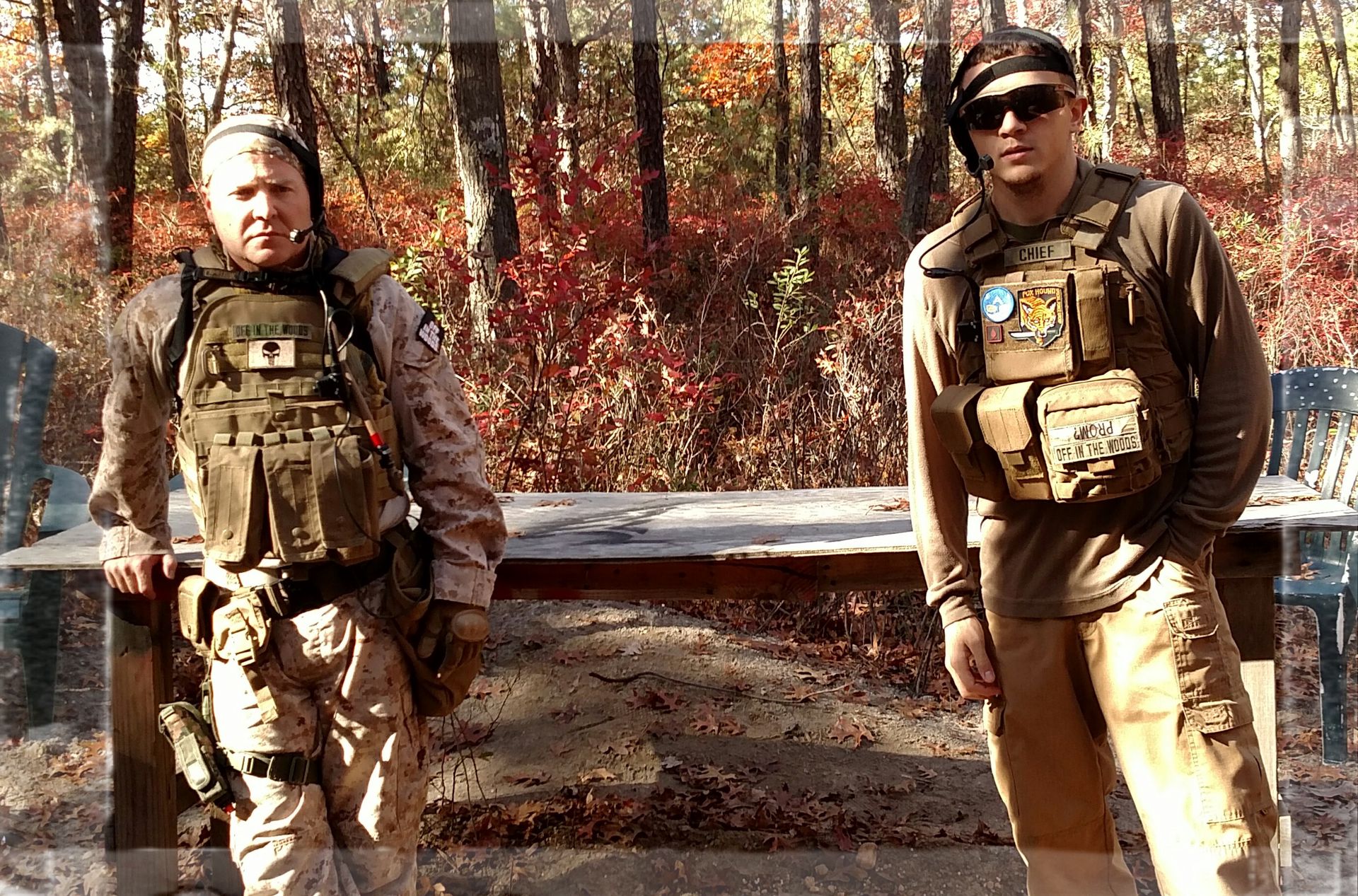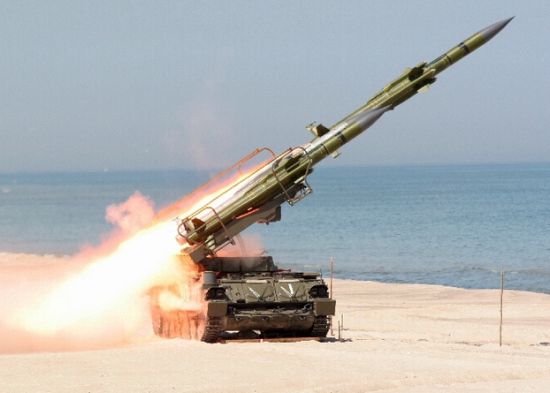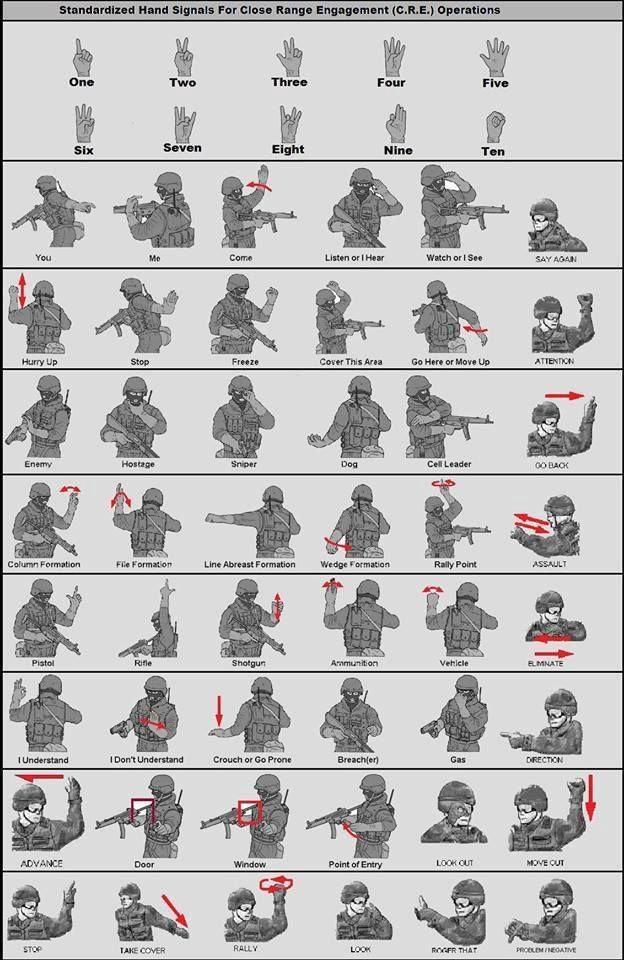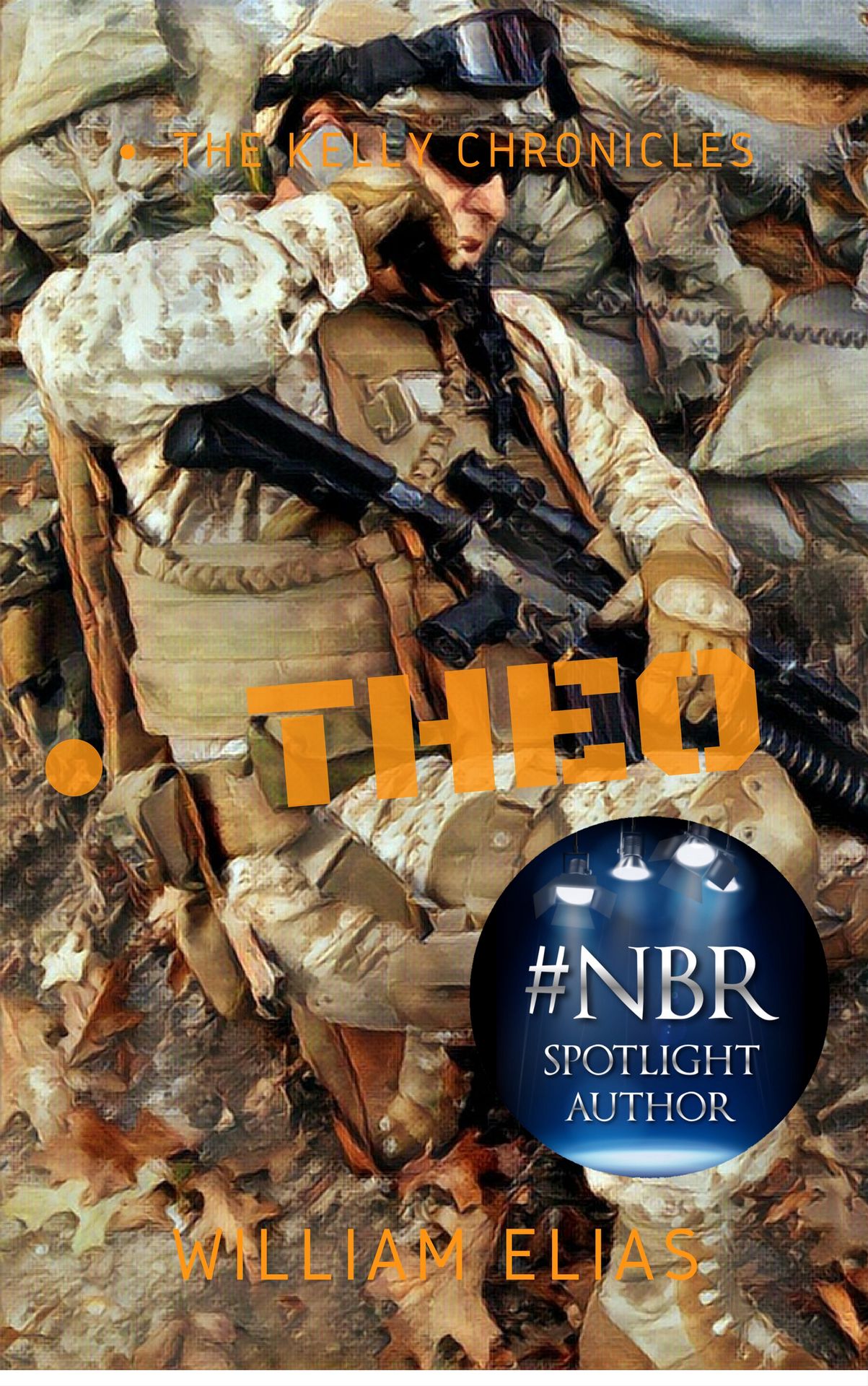SPEAKING THE LANGUAGE

SPEAKING THE LANGUAGE
The most important part of any battlefield campaign, beyond the shadow of a doubt, is communication. Without the ability to identify, coordinate movement, and understand strengths and weaknesses of both yourself and adversary, can be destructive.
As such, there is a very specific way in which communication during a contest must be utilized. This chapter is for the Student/Student to understand proper communication so as to avoid dialect, pronunciation, and help to minimize radio traffic during heated confrontations, and engagements.
PHONETIC ALPHABET
The following is the Military Phonetic Alphabet, or translation system, that helps to clarify speech into writing and or hearing. This alphabet was specifically designed for radio transmission to avoid the similarity in several pronunciations and dialects.
We use this system to clarify locations (Mark a Grid) and designations. The following is the alphabet we will use.
ALPHA - BRAVO - CHARLIE - DELTA - ECHO - FOXTROT - GOLF - HOTEL - INDIA - JULIET - KILO
LIMA - MIKE - NOVEMBER - OSCAR - QUEBEC - ROMEO - SIERRA - TANGO - UNIFORM - VICTOR
WHISKEY - X-RAY - YANKEE - ZULU.
For example, later in this chapter when asking for a radio check, your partner will respond, "Lima – Charlie", meaning Loud and Clear.
Other terms you will run into are those like:
Oscar Mike (On the Move)
Tango (Target)
Victor (Vehicle).
NUMBERS
In the same way, we use the alphabet for better communication and understanding during heated communication on the field, we likewise use this system for pronouncing numbers.
All of the numbers are the same accept, three, five, and nine.
3...TREE
5...FIFE
9... NIN-ER
OPERATING PROTOCOL
The biggest issue we have is students that don't know how to use or utilize proper communication technique and protocol. This is how we get what is called a "Dirty Radio", where there are garbled transmissions (too many people speaking at once). Open Microphones, (someone depressing their transmitting key without their knowledge), and unreadable transmissions caused by either electronic or user error!
Using the Com is simple if adhering to the following steps
1) Hold the mic at least six to eight inches from your mouth.
2) Depress key set and count one – one thousand to yourself.
3) Speak SLOWLY AND UNDER CONTROL! Do Not Scream Into The Mic!
4) After sending traffic, count – One Thousand, and release the key set. This is will ensure that your transmission has gone through from beginning to end.
5) DO NOT TAKE YOUR EYES OFF YOUR FIELD OF VIEW AND/OR TARGET!
In the event, your com is on your vest as seen below in figure
1, Gently lean the radio towards your head, making sure you do not take your eyes off of the field or target.
RADIO CHECK
Let's begin with the basics. Proper communication etiquette is critical on the field. Too much yelling, verbiage, or rushing, can be the difference between achieving your objective and being destroyed.
First, we begin with the Radio itself. Since there are so many types of setups and designs we are going to stay basic. I will say you must know your com system in and out. Know how to use it before you go out onto the ground, as it can cause chaos with other com systems if used wrong.
The following is the proper protocol for the radio check.
"Chief, to Shepherd for a Radio Check."
(Shepherd replies) "I have you Chief... Lima Charlie (loud and clear)... How Me?"
"Same... same." Would be Chief's reply. Now we know that both com's are working and linked with no static, or breaks in the transmission.
ACTUAL/CODENAMES
Each student is usually given a nickname (call sign) which makes it easier for us to identify them and their talents, strengths, and weaknesses. For example, "Risky" is given for those who have the tendency to, well, be risky. "Bull", would be a student that is a hard charger etc. Names should be given with a purpose, not just because one likes it.
In the Marine Corps and in Police Work I was known more for my nicknames than I was for my given name. They called me "Preacher" in Police Work.
My call sign now is "Shepherd", because I'm a pastor and I can keep students from going astray.
Anytime a Student hears "ACTUAL" over the com that means you are speaking to the Squad or Battalion Leader. For example, if your squad name is "Charlie", and you needed to communicate with your leader you would say the following:
"Charlie (add numeric designator) to Charlie Actual."
At this point, your transmission is not done. You need to know that your com is in fact communicating and sending traffic loud and clear. As such you would end your transmission with one of the following phrases:
1) "How Copy?"
2) "Over?"
3) "Copy?"
You've sent your transmission or are receiving and now you must know how to communicate on the receiving end. You can respond in any of the acceptable ways:
1) "Actual... Copy."
2) "Actual... Solid Copy."
3) "Affirm", or "Affirm on all."
4) "Copy... Go/send with traffic."
So the whole communication would go something like this:
"Shepherd Six to Shepherd Actual, how copy?"
"Shepherd Six this is Shepherd Actual, Solid Copy... go with traffic."
Another term that is often used is "Interrogative." Obviously preparing the receiver that a question and not information is forthcoming, especially if under fire.
A proper transmission using this term would be as follows:
"Shepherd Six, to Shepherd Actual, interrogative, what's the location of enemy armor. How copy?"
Notice that you do not pause after you call for the interrogative so make sure you know what you are going to ask and can do so calmly and with clarity.
THE CLOCK
Another very important communication skill is being able to tell your partner or squad at what degree your opponent or objective is at. Instead of saying left and right, we utilize the clock system.
The Diagram below, you will see how the clock works according to the body.
12:00 - What's directly in front of you
1:00 - 2:00
3:00 - Your immediate right
4:00 - 5:00
6:00 - What's directly behind you
7:00 - 8:00
9:00 - Your immediate left
10:00 - 11:00
If a partner yells "Watch my Six!" They are telling you to literally watch their back. Many times you will hear the following:
".... I've got contact at my two o'clock... Heavy Small Arms Fire." This means he has contact on his right side, and he is giving a specific location, instead of a general idea. As a result, if you have visual (eye contact) with the student/partner, you can count from his angle where the Tango (target) happens to be, and engage.
To simplify, just remember that straight ahead is your 12:00, your right arm is your 3:00, back is your 6:00, and left is your 9:00. If you can utilize this system to communicate, it will better help all of you know your surroundings and sectors.
CLOSE QUARTERS COMMUNICATION
It is a myth that says "com's" are useless in CQC. The reason being is that to "Yell out is to GIVE OUT."
So when in CQC situations and one student screams I'm going left... I'm going left; the opposition knows or has a good idea of where that student is coming from regardless of where he is moving. By yelling out, gives away your position, and can give away the position of your squad.
As a general rule, we would suggest using head Com's or hand signals if Head Com's cannot be deployed. This keeps your communique at a whisper, and it can be heard by all who are linked into your system.
CALLING IN AN AIRSTRIKE
The following would be the proper way to call for CAS (Close Air Support). It uses all of the elements that we have learned in this chapter so far. Note the use of acronyms as part of the language. Without it, you will never have believability in your writing.
"Steel Rain, this is Shepherd Actual, SEAD over." (Suppress Enemy Air Defense)
"Shepherd Actual, this is Steel Rain, SEAD out."
"Steel Rain, grid to suppress, Mike - Charlie, four - tree - fife, niner - two - one. Grid to mark, Mike Charlie, four - seven - tree, niner - eight - niner. Over.
(Steel Rain would repeat back the coordinates for confirmation, ending the transmission with "out.")
Shepherd Actual requesting the type of CAS necessary for the task: "Steel Rain, SA Six Gainful, (Surface to Air self-propelled Air Defense System) non-standard minus two, to minus three-zero to plus one, (non-standard is an Improved Conventional Missile [ICM] gauging projectile or fuse = Latter part is coordinates of direct impact for gunner or pilot) mark smoke on the deck (Infantry is required to detonate smoke grenades to mark for missile strike). Two rounds HEVT, (High Explosive Variable Time) CAS (Controlled Air Strike) TOT, (Time On Target) fife - tree, over. (Five minutes - three seconds)
* Can also use TTT - (Time to Target)
(Steel Rain would repeat back the coordinates for confirmation, ending the transmission with "out.")
Shepherd Actual Speaking: "Steel Rain, OT (On Target) direction 1600.
"Steel Rain, MTO, (Message to Observer), Charlie two rounds, HE delay in effect, (High Explosive delay = from launch to impact) five guns. Bravo, one round, one gun, (Bravo is the battery that is firing, one round from only one launcher) smoke on the deck. (confirming visual of smoke indicator) SEAD. CAS TOT 5-3, target number Echo-Kilo tree-zero-zero-niner, over."
"Shepherd Actual, copy as MTO. Charlie, two rounds, HE delay, five guns, bravo, one round, one gun, smoke on the deck. SEAD. CAS TOT 5-3. Out.
SA Six Gainful - Surface to Air Battery

HAND SIGNALS
The following is a very effective way to communicate in the field in the presence of heavy opposition, regardless if tactical com's are in use or not. Hand Signals.
Non-Verbal communication is just as effective as verbal, and be even more precise. However, in order for these signals to be properly coordinated and carried out, everyone must be in visual contact with Point Leader, and must obviously know their role with each command.
The following are the basic Hand Signals used on the field.

Speaking The Language: at the end of each chapter I will place the Subject Terms, Acronyms, and/or Lingo. Again, any questions please feel free to ask!
Semper Fi!
Billy
COMBAT ACRONYMS:
AO: Area of operation
AOE: Area of engagement
BDA: Battle Damage Assessment
COP: Combat Outpost. A small base, usually housing between 40 and 150 Marines, often in a particularly hostile area, every Marine responsible for guard duty and patrolling.
GLASSED: Observed target with binoculars or rifle scope
LOD: Line Of Departure
ROE: Rules of Engagement, rules for engaging civilian targets
RTB: Return to Base
RCT: Regimental Combat Team
FOB: Forward Operating Base
GREEN ZONE: In Iraq, the heavily fortified area of central Baghdad where most government facilities are located. In southern Afghanistan, refers to the lush, densely vegetated areas following rivers which Taliban fighters defend vigorously.
BROWN ZONE: Barren mountains
IED: Improvised Explosive Device
IDF: Indirect Fire
KINETIC: Violent Territory, i.e. "The Pech Valley is one of the most kinetic areas in Afghanistan."
OPTEMPO: Operational Tempo, high or low
LP/OP: Listening Post - Observation Post
TIC: Troops in contact
CQB or CQC: Close Quarters Battle/Combat
FPF: Final Protective Fire
TAD: Tactical Aire Direction (communication to CAS via Net)
NET: High-frequency Network - UHF (ultra high frequency), VHF (very high frequency)
SAM: Surface to Air Missiles
IR-SAMS: Infra Red Surface to Air Missile Site
AAA: (Triple A) Antiaircraft Artillery
TOS: Time On Station
QRF: Quick Reaction Force

Bạn đang đọc truyện trên: AzTruyen.Top